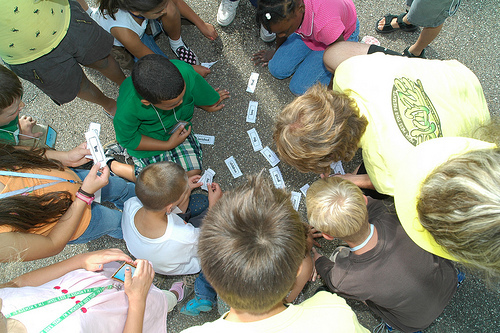Though charter schools have been slow to reach military communities, the first privately-financed charter school on a U.S. military installation is set to open on Joint Base Andrews this fall. Imagine Andrews Public Charter School’s innovative real estate structure may pave the way for replicate models across the country.
School construction broke ground June 14 on the Maryland base, previously named Andrews Air Force Base. The 35,000-square-foot building will accommodate more than 300 K-5 students, with plans to expand into room for 200 more grade 6-8 students in the next five years. Rare among public schools, the $6 million building is privately financed by a coalition of organizations and businesses.
While the school will be open to local children by lottery, its student body will be primarily military.
“About 75 percent of military kids are 12 years of age or younger—we have a young force,” said David Splitek, project manager for Higher Education Initiatives. “About 76 percent of military kids in the United States are going to public schools.”
Unlike the majority of their peers, military children often relocate every two to three years. Providing these children with targeted education where their parents live and work sounds ideal, but often falls short due to restrictive state laws governing charters and lack of funds. A few have succeeded on government funds, but not many.
Private Support for Public Education
Charter schools typically function separately from their surrounding school districts, so they usually cannot tap state and local school building funds. Because charters can be closed if they perform poorly, they are an investment gamble.
“The biggest fundamental flaw [obtaining charter school facilities] is there’s no one backing them,” said Himanshu Kothari, an investment financier who has studied private financing for public schools.
For Imagine Andrews to build on Air Force land, the Air Force leased it to a real estate investment firm, which is leasing it to CDSC (ACRONYM), which in turn will lease the building through a corporation to the charter school.
“It took a lot of time to get the financing worked out because there are so many approval levels,” said Karl Jentoft, CSDC’s vice president of corporate development.
Risks of Investment
Kothari has worked with military housing ventures in the past. Many were recently shut down through base realignment, causing private developers to lose their investments in related property.
“It seems to risk quite a bit, a corporate guarantee as well as a 1,600 military housing portfolio,” Kothari said. “Clark is probably doing this in exchange for additional business from the [Department of Defense]. While the returns may not be substantial, it builds quite a bit of goodwill and thus may help future business.”
Although the guaranty behind the school’s opening has made unique financing possible, there is still the possibility of investment losses.
“When it comes to charter schools, risk varies from state to state, and developers don’t want to foreclose,” Kothari said. “They need schools of a certain size and most charter schools don’t get to that size.”
Forerunner Schools
Though the risk and complexity of the project was evident early, Jentoft said CSDC saw the project as a challenge with great promise.
“There’s a lot of interest in doing this in other bases around the U.S.,” Jentoft said. The Air Force hopes to follow a similar process in privatizing military family housing across the country, said Col. Thomas Laffey.
Other coalitions of community groups have been able to create charter schools on or near military installations to give military kids specialized instruction. That happened at the New Orleans Naval Air Station. Its charter school also sits on military property, with a charter granted by Louisiana, enrolling military children from on and off-installation.
“They’ve got a marvelous fiscal plan,” Splitek said. “My understanding is they went to the state of Louisiana with a proposal. Not just parents, but people from the installation went with a united front, saw it as an opportunity to help their families and they found a sympathetic ear.”
The Grassroots Institute of Hawaii has developed a pilot project for charters serving military children with the hopes of national expansion.
Image by Herald Post.




